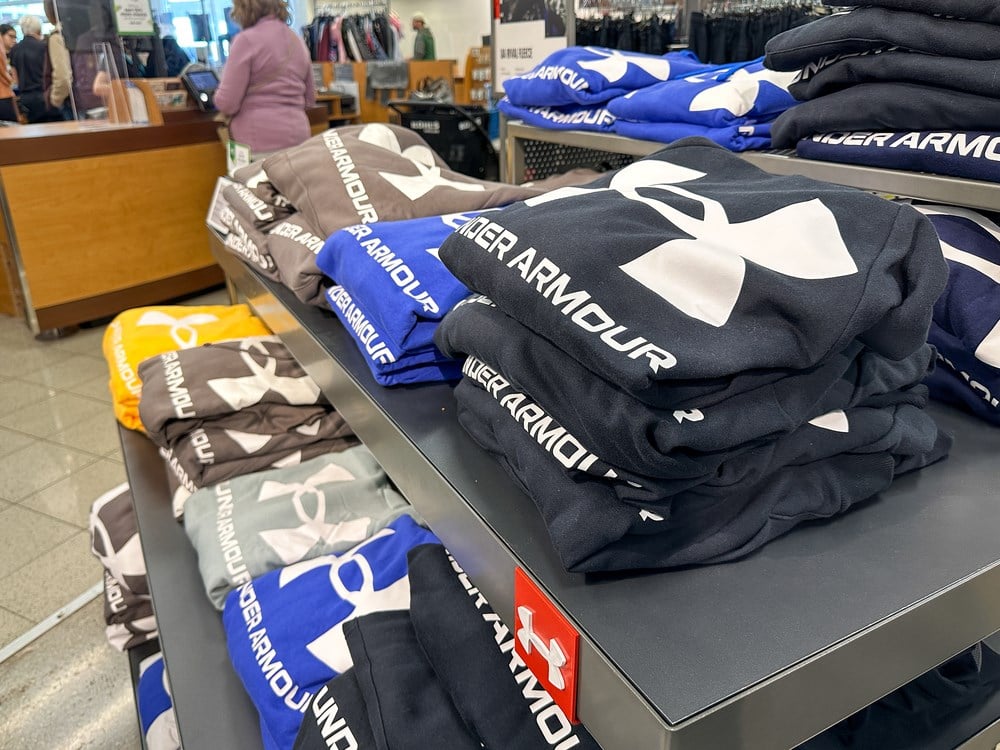 When Under Armour, Inc. (NYSE: UAA) reports quarterly results next week, Wall Street won’t be expecting much — and that’s a good thing.
When Under Armour, Inc. (NYSE: UAA) reports quarterly results next week, Wall Street won’t be expecting much — and that’s a good thing.
Analysts project that the athletic clothing manufacturer will report $1.3 billion in revenue. It would be its lowest top line figure in two years.
The estimate reflects a challenging economic environment for apparel companies. Cooling but still elevated inflation and higher interest rates have weighed on recent performances.
Even industry leader Nike is experiencing muted sales growth and profit declines. A tough shopping landscape has forced players (including Under Armour) to ramp promotional activity at the expense of profitability.
The good news? The worst is probably over.
Under Armour is anticipating flat sales growth in its new fiscal year (FY24) — but it could be a tale of two halves.
With an inventory buildup causing U.S. wholesalers to pause new orders and supply chain disruptions lingering, first-half results are expected to be subpar. First-quarter guidance calls for a low- to mid-single-digit revenue decline and a net loss.
Coming out of the halftime break, though, Under Armour’s performance should improve significantly. The supply chain, most notably freight expense, is expected to go from a headwind to a tailwind. Inventory reductions and fewer markdowns are slated to improve margins. And if inflation keeps moderating and rate hikes slow (if not stop), economically sensitive companies like Under Armour should see a better demand environment.
This is why Wall Street is forecasting a return to growth in the back half of fiscal 2024, setting the stage for a rebound year in fiscal 2025. Current estimates for FY25 imply 5% and 26% sales and profit growth respectively.
So while the stock market is sometimes prone to a ‘what have you done for me lately’ mentality, it is ultimately a forward-looking animal. A company’s equity value is about its earnings power going forward more so than past results.
And with Under Armour’s financials expected to be on the upswing over the next couple of years, investors may be starting to look past its recent woes to what’s next — which is why another breach of the $7.00 per share level is unlikely.
What Are Under Armour’s Growth Drivers?
Under Armour may have an undervalued growth catalyst up its sleeve in the form of an emerging direct-to-consumer (DTC) business. The company has invested a lot of money in its DTC platforms which include Under Armour branded stores, factory outlets, online storefronts and catalogs. Going forward, the emphasis will be on e-commerce, its faster-growing DTC channel. At store online order pickup and flexible payments are among the company’s expanding digital capabilities.
On its most recent earnings call, management introduced a Protect This House 3 (PTH3) initiative designed to improve business alignment and clarity. The three pillars are: 1) greater global brand heat (marketing slang for brand strength), 2) better product design and quality, and 3) U.S. growth. If leadership can execute on these priorities, the company should be better positioned to gain market share and deliver long-term shareholder value.
While Under Armour is dialed into its domestic market opportunity, international expansion remains an important part of the growth story. In fiscal 2023 Q4, ex-North America revenue grew 16% (twice overall sales growth), led by 24% growth in the Asia-Pacific region. With international sales less than 40% of total sales, the continual buildout of e-commerce platforms and physical retail overseas could be a major boon to growth.
Is Under Armour Stock Undervalued?
Based on the latest consensus estimate, Under Armour is trading at 16x forward earnings. This makes it undervalued for several reasons:
- Industry peers are more expensive. Nike is at 29x and Lululemon 32x.
- The forward P/E on the S&P 500 is around 21x.
- An improved profit margin outlook warrants P/E multiple expansion and a move back toward the 52-week high of $11.41.
In the last few weeks, multiple bullish technical patterns have popped up on Under Armour’s stock chart including a diamond bottom, a bottom triangle and a double bottom. The common thread? The word ‘bottom.’
With improving fundamentals, a low valuation and bullish technicals, the stars are aligning for Under Armour to be a better fit for investors in 2024.